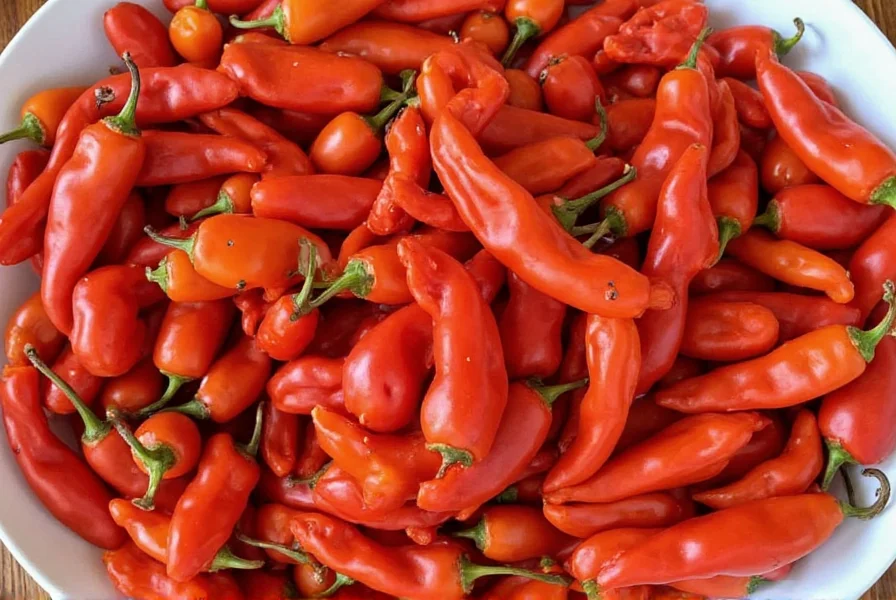Understanding Ghost Peppers: More Than Just Heat
Ghost peppers (Bhut Jolokia) rank among the world's hottest chilies, but their complex flavor profile includes sweet, smoky, and floral notes that elevate dishes when used properly. Unlike simpler hot sauces, authentic ghost pepper recipes balance this intense heat (2-6 times hotter than habaneros) with complementary ingredients. The key isn't just surviving the burn—it's creating dishes where the pepper enhances rather than dominates.

Essential Safety Protocol for Handling Ghost Peppers
Before attempting any ghost pepper recipes for beginners, implement these safety measures:
| Safety Step | Why It Matters | Pro Tip |
|---|---|---|
| Wear nitrile gloves | Skin contact causes burning that lasts hours | Double-glove when processing multiple peppers |
| Avoid touching face | Oil transfers to eyes/nose causing severe irritation | Keep milk or yogurt nearby for accidental contact |
| Work in ventilated area | Airborne capsaicin causes respiratory discomfort | Use exhaust fan or work outdoors |
| Wash tools thoroughly | Residual oil contaminates future dishes | Soak in soapy water for 15+ minutes |
Heat Management Techniques for Balanced Recipes
Successful ghost pepper heat level management relies on strategic ingredient pairing:
- Dairy components (yogurt, cream, cheese) bind to capsaicin—add 1-2 tablespoons per serving
- Natural sugars (honey, fruit, caramelized onions) counteract heat without artificial sweetness
- Acidic elements (citrus, vinegar) brighten flavors while reducing perceived heat intensity
- Fat carriers (avocado, olive oil) help distribute heat evenly without overwhelming burn
Always add ghost pepper incrementally—wait 15 minutes between additions to assess heat levels, as the burn intensifies over time.
Beginner-Friendly Ghost Pepper Recipes
These easy ghost pepper recipes for beginners introduce the flavor without overwhelming heat:
Ghost Pepper Mango Salsa (Mild Heat)
This vibrant salsa balances ghost pepper's fire with tropical sweetness. Perfect for tacos or grilled meats.
- 2 ripe mangoes, diced
- 1 ghost pepper, seeds removed, finely minced (¼ teaspoon)
- 1 red bell pepper, small dice
- ½ red onion, finely chopped
- Juice of 2 limes
- ¼ cup cilantro, chopped
- Salt to taste
Method: Combine all ingredients. Refrigerate 2 hours before serving to allow flavors to meld. The mango's natural sugars tame the ghost pepper's intensity while preserving its distinctive flavor.
Ghost Pepper Honey Glaze (Medium Heat)
Ideal for chicken wings or roasted vegetables. Makes 1 cup.
- ½ cup honey
- 2 tablespoons apple cider vinegar
- 1 tablespoon ghost pepper powder (start with ½ tsp for milder version)
- 2 cloves garlic, minced
- 1 teaspoon smoked paprika
- ¼ teaspoon salt
Method: Whisk ingredients over low heat until smooth. Simmer 5 minutes. Strain if desired for smoother texture. The honey's fructose neutralizes capsaicin while enhancing the pepper's floral notes.

Advanced Ghost Pepper Applications
Experienced cooks can explore these sophisticated techniques for ghost pepper recipes without overwhelming heat:
Cold-Infusion Method
Create nuanced heat by infusing ghost peppers in oil or alcohol at room temperature for 24-48 hours, then removing peppers. This extracts flavor compounds while limiting capsaicin transfer compared to heat-based infusion.
Layered Heat Approach
Combine ghost pepper with milder chilies (like jalapeño or serrano) to create complex heat profiles. Example ratio: 1 part ghost pepper to 4 parts jalapeño maintains noticeable heat while improving flavor balance.
Ghost Pepper Substitutions and Storage
When ghost pepper substitution alternatives are needed:
- Scorpion pepper: Slightly hotter with similar flavor profile (use 25% less)
- Habanero: 1/3 the heat—use triple the quantity for comparable spice
- Trinidad Moruga: Closest flavor match with variable heat (start with half quantity)
- Dried ghost pepper flakes: More concentrated—use 1/3 the fresh quantity
Proper storage extends usability: freeze whole peppers in airtight bags for 12+ months, or create ghost pepper ice cubes (1 pepper per cube) for precise portioning. Never store in plastic containers—use glass to prevent chemical leaching from capsaicin.
Frequently Asked Questions
How do I reduce ghost pepper heat after a dish is too spicy?
Add dairy (yogurt or sour cream), acid (lemon juice), or sugar gradually while tasting. For sauces, dilute with additional base ingredients. Never add water—it spreads capsaicin without neutralizing it. The most effective immediate remedy is consuming full-fat dairy products.
Can I use ghost peppers in sweet recipes like chocolate or jelly?
Yes—ghost peppers work exceptionally well in sweet applications. For chocolate, use 1/8 teaspoon ghost pepper powder per 4 oz chocolate. For jelly, add one small minced pepper per 4 cups fruit mixture. The sweetness counteracts heat while highlighting the pepper's natural fruitiness, creating sophisticated flavor complexity.
How long does ghost pepper heat last in dishes?
Ghost pepper heat intensifies during cooking but stabilizes after 20-30 minutes. In finished dishes, the perceived heat peaks 10-15 minutes after eating and can last 30-60 minutes depending on individual tolerance. Unlike milder chilies, ghost pepper's heat compounds are heat-stable and don't diminish significantly with prolonged cooking.
What's the difference between ghost pepper powder and fresh peppers in recipes?
Powder concentrates heat (use 1/3 the quantity of fresh) and adds smoky depth, while fresh peppers provide brighter, fruitier notes. Powder integrates more evenly throughout dishes, whereas fresh peppers create localized heat pockets. For consistent results in sauces and marinades, powder offers more predictable heat distribution.
How can I safely taste-test ghost pepper recipes during preparation?
Use a dedicated tasting spoon and dip only the tip into your dish. Wait 10-15 minutes between tests to assess heat buildup. Keep dairy products (milk, yogurt) and sugar nearby for immediate relief. Never taste directly from cooking utensils—this concentrates capsaicin and risks overexposure. For extreme recipes, consider using a pH meter to gauge capsaicin levels objectively.











 浙公网安备
33010002000092号
浙公网安备
33010002000092号 浙B2-20120091-4
浙B2-20120091-4